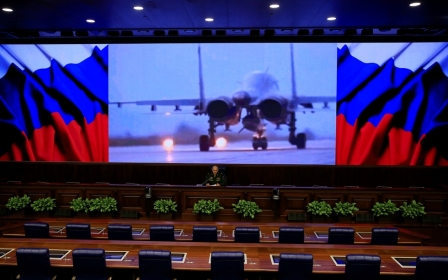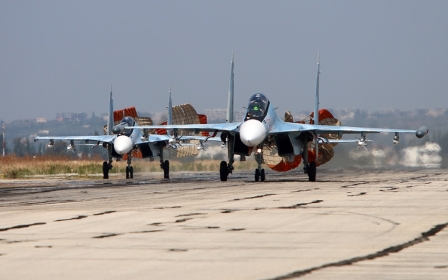Russia and Iran: Neither friends nor foes

The mainstream press often presents Iran and Russia as strong allies and almost as an “axis of evil”.
The mass media, especially in the USA, usually follows the over-simplistic narrative reflecting views of the general public and briefings from the State Department. In the context of this approach, the “good” guys – and the USA is clearly among them – engage in friendly relationships with other “good” guys – whereas the “bad” guys engage in alliances with each other.
The complexity of the global picture and the pragmatic aspect of the relationship between world powers are often ignored. The West’s approach to Iran and Russia is a good example. Both the people in Moscow and Tehran are dubbed as “bad” guys. Thus all of them shall be strong allies and partners working in cahoots against the coalition of “good” guys.
On the surface, it appears as if Iran and Russia have common interests. First, both continue to strongly oppose the “West”. After Russia’s Crimea annexation, support of East Ukrainian separatists, and the clash with Turkey, a NATO member, Russia’s relationship with the West returned almost to its Cold War position. At the same time, Iran continued to be strongly anti-Western, or at least anti-American and anti-Israeli.
Washington also viewed Russia’s involvement with Syria with either suspicion or disapproval and consequently dismissed Moscow’s assertions that their major goal is dealing with the self-proclaimed Islamic State (IS). Washington assumed – and certainly not without reason – that Moscow’s major goal is not IS but those who fought against Syrian President Bashar al-Assad, seen here as a Moscow proxy. This certainly does not reduce the tension between Moscow and Washington.
Teheran also supported al-Assad, and both Iran and Russia seemed to be working together in propping up the Assad regime. Iran and Russia clearly emerged as allies; at least this appears to be the case at first glance. Still, taking a closer look at the relationship between the two countries reveals that their relationship is hardly trouble-free and the Russian side has sent Iran various signals indicating their displeasure. The problem with oil and gas is the major sticking point.
Putin's grand strategy
Since the beginning of his rule, Putin’s grand strategy has been based on the assumption that prices of oil and gas would be constantly high and thus assure Russia’s economic well-being almost indefinitely. This approach has faced serious problems recently. To start with, oil and gas prices have collapsed. Secondly, Moscow experienced serious problems in monopolising European markets. All of this made it quite difficult for Moscow to keep oil prices at acceptable levels.
As a result, they attempted to cooperate with other oil-producing countries to freeze oil production and in turn increase prices. Iran, however, refused to cooperate and stated that the very fact that it sought to end Western sanctions was due to its desire to sell as much oil on the world markets as possible.
While Iranian oil sales were a serious matter, Moscow would be more disgruntled if Iran tried to send gas to Europe, the market which the Kremlin has tried to monopolise as much as possible. Tehran already explored the possibility of doing this by having talks with nearby Georgia and even Azerbaijan, despite a long-guarded relationship with Baku. If this were to happen, Iran could well replace Russia’s planned South Stream and Turkish Stream, both planned by the Kremlin to deliver Russian gas to Europe from the south, but both of which have led nowhere.
Great game for gas
The Kremlin watched nervously during Iran’s rapproachment with Turkmenistan, a state which has one of the largest deposits of gas. Turkmenistan has had a decades-long dream of sending its gas to Europe via a gas line on the bottom of the Caspian Sea. The Kremlin strongly opposed the project and, while strengthening its navy in the region, stated that it may declare war if Turkmenistan were to start to engage in the project. Landlocked Turkmenistan had no option but to send most of its gas to India and Pakistan.
Still, the proposed gas line would run through unstable Afghanistan, and, anyway, it would be years before the project could be accomplished. Ashgabat’s desire to send gas to the West continues to be strong, and Iran could consider providing Turkmenistan with the possibility of sending gas to Europe if this would be a precondition for sending Iranian gas to European markets.
None of this pleased Moscow, and the Kremlin sent several messages to Iran to indicate its displeasure. The first was related to the delivery of S-300 missiles, powerful missiles which could well protect Iran from possible American and/or Israeli strikes. The original contract was signed in 2007, scrapped in 2010, and reconfirmed in 2015.
Iran's long wait for S-300s
There were several cases recently when both Iran and Russia proclaimed that the S-300s were either about to be delivered in the near future or already on their way to be delivered. Still nothing come from these decisions. For example, in December 2015, Russia proclaimed that the delivery was started, as was proclaimed by Vice Premier Dmitry Rogozin. Still nothing was delivered.
By February 2016, Iranian Defence Minister Hossein Dehghan was in Moscow to discuss the delivery of the missiles and purchase of other Russian military hardware in the future. It was implied that the S-300s would be delivered in the near future. Still almost on the very same day of the optimistic announcements about Russian-Iranian cooperation in the military realm, Kremlin spokesman Dmitry Peskov said: “It is too early to name the exact delivery date for Russian S-300 air defence systems to Iran.”
In April 2016, Teheran announced that it had finally started to receive missiles. Even so, the Iranian Ministry of Defence stated that it was in “the beginning phase” of delivery, and the Russian Ministry of Defence provided no confirmation of the start of delivery. On 17 April, a big military parade took place in Teheran which showed the S-300 missile. However, it was not the assembled and ready-to-be-used system; just “parts”.
The Iranians continue to be unhappy with Russian procrastination, and the Iranian minister of defence plans to visit Moscow soon. One can assume that the S-300 delivery would be one of the major topics of discussion.
Procrastination with the S-300 delivery was not the only signal that Moscow sent to Tehran. The second message was related to Syria.
While preservation of Russia’s bases in Syria was the major reason, or at least one of the major reasons, for the Kremlin’s involvement in the conflict, it is not so concerned with the fate of al-Assad and his complete control over Syria. Tehran has a much bigger stake in the region. By the withdrawal, or at least partial withdrawal of its forces, the Kremlin clearly indicated to Tehran that it would not help Iran emerge as the dominant force in Syria at Russia’s expense.
All of this friction does not imply that Moscow and Tehran will be transformed into bitter enemies, but the possibility is there. Tehran could well get the S-300s anyway. Russia and Iran could be engaged in mutually profitable projects in the future, and Russia is still engaged in the Syrian war. The point is different: Russia’s engagement with Iran demonstrates that in the emerging multi-polar world, the relationship between powers is much more complicated than readers of the major newspapers might assume.
- Dmitry Shlapentokh is Associate Professor at Indiana University – South Bend, USA. He is the author of many articles and books related to the former USSR.
The views expressed in this article belong to the author and do not necessarily reflect the editorial policy of Middle East Eye.
Photo: A handout picture provided by the office of Iran's supreme leader Ayatollah Ali Khamenei shows him (C) receiving a gift from Russian President Vladimir Putin (L) during their meeting in the capital Tehran, on 23 November, 2015 (AFP).
Middle East Eye propose une couverture et une analyse indépendantes et incomparables du Moyen-Orient, de l’Afrique du Nord et d’autres régions du monde. Pour en savoir plus sur la reprise de ce contenu et les frais qui s’appliquent, veuillez remplir ce formulaire [en anglais]. Pour en savoir plus sur MEE, cliquez ici [en anglais].





